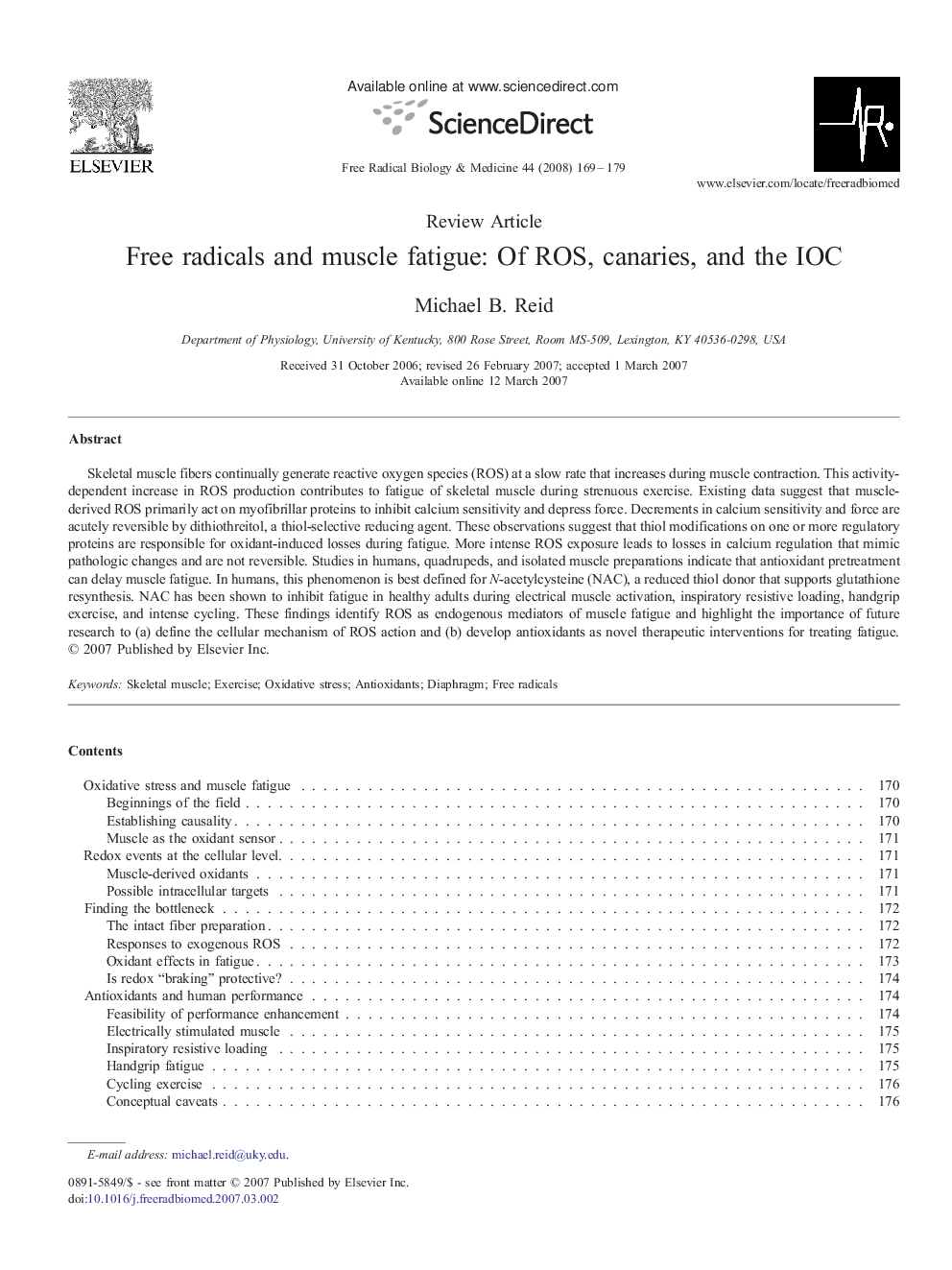| کد مقاله | کد نشریه | سال انتشار | مقاله انگلیسی | نسخه تمام متن |
|---|---|---|---|---|
| 1910345 | 1046766 | 2008 | 11 صفحه PDF | دانلود رایگان |

Skeletal muscle fibers continually generate reactive oxygen species (ROS) at a slow rate that increases during muscle contraction. This activity-dependent increase in ROS production contributes to fatigue of skeletal muscle during strenuous exercise. Existing data suggest that muscle-derived ROS primarily act on myofibrillar proteins to inhibit calcium sensitivity and depress force. Decrements in calcium sensitivity and force are acutely reversible by dithiothreitol, a thiol-selective reducing agent. These observations suggest that thiol modifications on one or more regulatory proteins are responsible for oxidant-induced losses during fatigue. More intense ROS exposure leads to losses in calcium regulation that mimic pathologic changes and are not reversible. Studies in humans, quadrupeds, and isolated muscle preparations indicate that antioxidant pretreatment can delay muscle fatigue. In humans, this phenomenon is best defined for N-acetylcysteine (NAC), a reduced thiol donor that supports glutathione resynthesis. NAC has been shown to inhibit fatigue in healthy adults during electrical muscle activation, inspiratory resistive loading, handgrip exercise, and intense cycling. These findings identify ROS as endogenous mediators of muscle fatigue and highlight the importance of future research to (a) define the cellular mechanism of ROS action and (b) develop antioxidants as novel therapeutic interventions for treating fatigue.
Journal: Free Radical Biology and Medicine - Volume 44, Issue 2, 15 January 2008, Pages 169–179